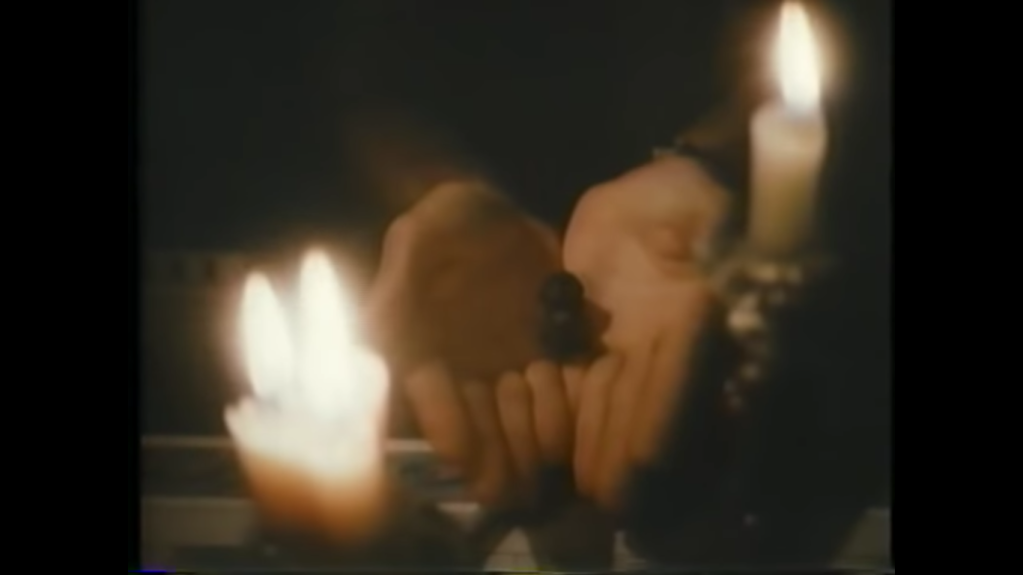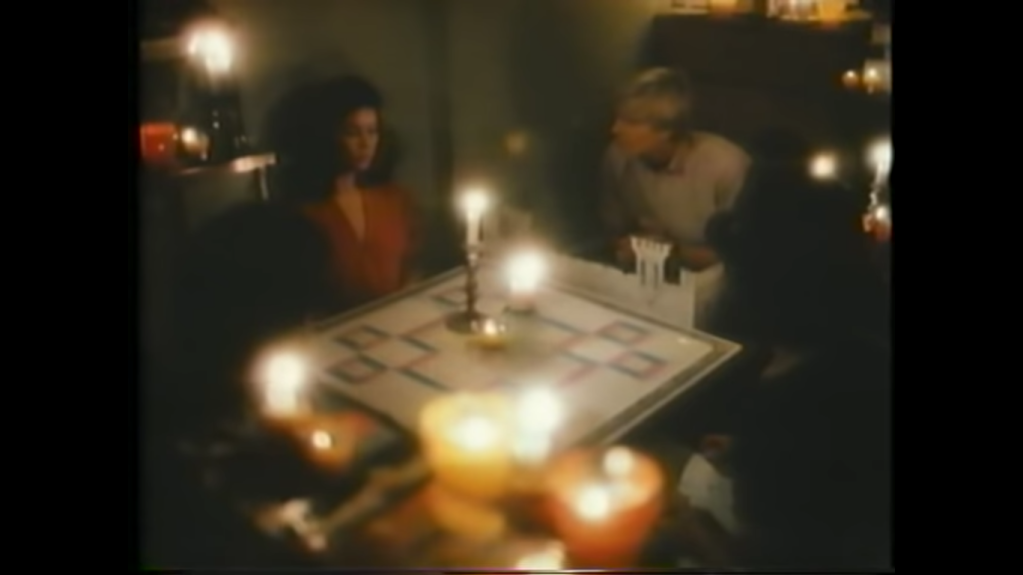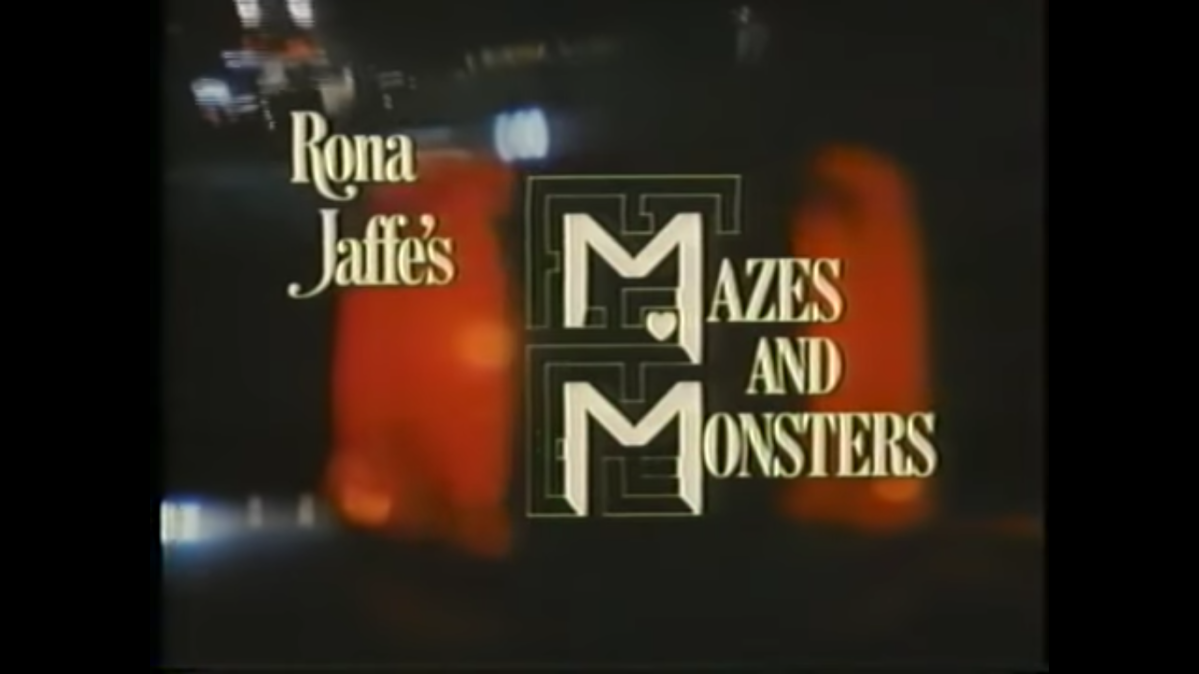Have you heard of Mazes and Monsters?
Well, maybe it sounds similar to Dungeons and Dragons, and that makes sense, since it is a fictionalization of that particular Table Top Role Playing Game (TTRPG) and was created by author Rona Jaffe for her book of the same title.
I, you will not believe this, found a copy in a small library that was about to be demolished and its books thrown out, so I grabbed it. I had heard of the movie and had heard that it was based on the book, but had neither rad nor watched either, although I had always been a little bit curious. Now that I had a copy in possession through serendipity, I decided to read it, and naturally, watch the movie.
The following will represent a brief review and comparison, but for those of you who care about it note well the caption on the below image, which along with all others in this post are screenshots from the movie…

It is likely worth noting that I am a long-time fan of TTRPGs and while I was introduced to them (on account of not being born and then being an infant) after their initial heyday with Gary Gygax and Dave Arneson and the subsequent controversy with the game, I am very familiar with the issues many people have with TTRPGs (in particular with Dungeons and Dragons). Mazes and Monsters is definitely inspired by (or designed to cash-in on) the controversy and revolves around a group of youths playing the game and their ensuing misadventures.

I, somehow, enjoyed the book. I had assumed before reading it that it would feature a lot of its eponymous game, but the vast majority of the book has only tangent connections with the game itself. The lack of gameplay is the aspect of the novel that I found most disappointing, but it did make me relish the few parts of the book that actually described Jaffe’s game, which is essentially a word-replacement analog of Dungeons and Dragons. For anyone that has played D&D, it should be at least familiar, and if you cut your teeth on the 2nd Edition of AD&D or earlier, you will note that it is very familiar indeed.
The main focus of the book is the four players (and their parents for some reason) that play the game together at a fictional New England university. The characters are without major flaws and seemed very shoe-horned into position. One of the group is secretly suicidal and decides to kill themselves out of boredom. Whilst going to the place where they wish to end their life, a series of natural caves, the suicidal character is inspired by the caves and believes that the caves would make a good place to Live-Action Role Play (LARP).
The now non-suicidal and inspired player then goes about writing their own adventure centred around playing in the caves. In the book the character is portrayed as having infinite wealth, time, and resources to make the adventure, which seemed to be the most fantastic part of the book.

The players enjoy the LARP, but one of them has a psychotic break and assumes the role of their character in their real life. This is shown as a gradual change, but basically the intensity of LARP combined with a possible genetic predilection towards mental illness led to a total disconnect with reality. Due to this disconnect, the student goes missing, and being good friends, their compatriots seek them out.

The police get involved and the remaining three players manage to track their compatriot down to New York City. The book then switches to the point of view of the missing character who, in addition to becoming an actual street-sleeping homeless person, attempts to become a male prostitute. The character is picked up a sleazy dude and brought to a hotel, but his advances are enough to drive the missing person to violence, and afterwards they regain enough of their old self to call their friends for help.

From that point it is essentially the epilogue. The player switches back to their character’s personality and there is no happily ever after for them. The judgement is left ambiguous – was it the game that caused it, or their hinted-at underlying condition. Overall a fairly light story, easy on violence, mentioned by never described sex, and lacking a concrete message or judgement.
The movie, which is likely most famous for being Tom Hanks’ first role, is an excellent adaptation. The plot follows the book almost exactly, with the male prostitution being removed totally, and only a few details removed to keep it from being a five-hour flick. If you don’t have the inclination to read it (or can’t find a copy), you might consider watching the movie. It’s available to purchase on DVD (hey! Some people like physical media!) or on a few streaming sites, but you can just as easily find it on that video site...
Have you read it or watched it? Tell me what you thought of it in the comments.



You must be logged in to post a comment.